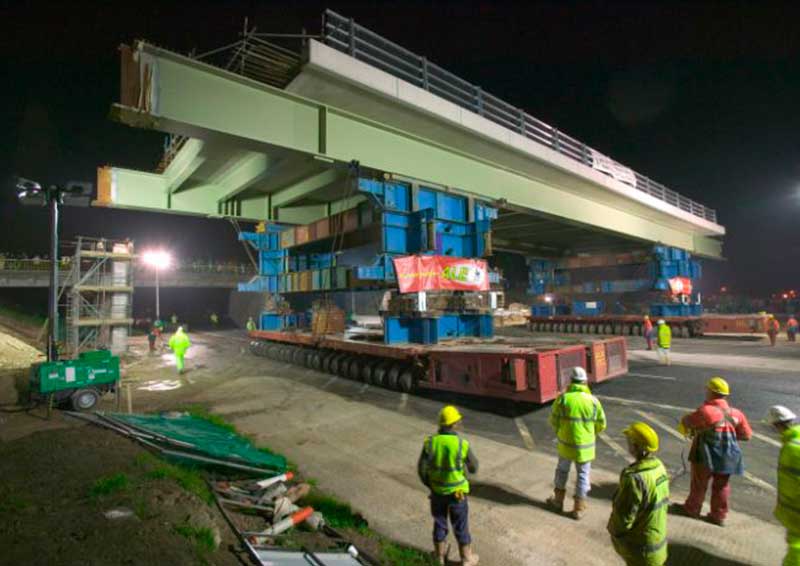Systems thinking
Contents |
[edit] Introduction
Systems thinking provides a framework for understanding complex issues and structuring problems to deliver substantially better results.
Civil engineering projects involve multiple stakeholders with differing motivations, purposes, aims, objectives and constraints – some of which inevitably conflict. This makes civil engineering projects inherently demanding. There has long been a recognition by everyone involved that UK industry needs to improve.
Traditional 'predict and provide' linear methods - brief, design, construct and deliver - work when uncertainties are low. However, there is often uncertainty due to financial, technological, political and other pressures, and consequent surprises.
Focusing on the lowest possible cost as an indicator of value has not provided solutions to these problems in the past. How modern infrastructure projects are run needs to be given a re-think, and one way of doing that is 'systems thinking'.
[edit] What is systems thinking?
In overview, systems thinking is joined-up thinking - getting the right information (what) to the right people (who) at the right time (when) for the right purpose (why) in the right form (where) and in the right way (how).
While this may be done intuitively for simple problems, when they are complex a framework is needed that supports learning together.
The first point in trying to achieve this is to understand that success is all about collaboration. Consequently, the first question is to find a clear and shared version of what success looks like.
All stakeholders need to understand and agree the purpose at every stage even if the definition of success changes over time. In order to clarify interdependencies between differing purposes it is imperative to address the questions 'why' before 'how' and to find ways to collaborate to add value for all.
Second, stakeholders should agree to admit that sometimes they do not know - there may be unforeseen and unrecognised sources of uncertainty. This can be the most difficult part of the conversation.
The third aspect of systems thinking is to understand project scope and remit - the system boundaries. Systems thinkers do this by thinking through the necessary and sufficient conditions for the success of any process, understanding processes as 'holons' that are both complete in themselves and the basis of higher level activity. This gives a new understanding of what we mean by 'practical rigour'.
[edit] How does systems thinking help?
Systems thinking is useful for construction projects because it enables the interests of all stakeholders to be included explicitly. This is vital in an increasingly demanding context with challenging requirements from multiple stakeholders.
Systems thinkers seek to understand the different needs and values of each stakeholder and then create a new value network that synthesises different needs and values in ways acceptable to all involved.
Systems thinkers can do this because they look for interdependencies between processes – many involving different stakeholders. This enables professionals to notice ways in which existing problems can be solved, or new combinations of needs or values be created.
In addition, because processes exist at all scales and stages of a project a systems thinking approach enables more creative problem solving at all stages of a project, rather than relying heavily on early stage design briefs to resolve major challenges.
Systems thinking helps engineers by:
- Providing a framework for understanding and managing uncertainty and complexity.
- Enabling multiple stakeholders to collaborate and add value.
- Structuring problems to facilitate joined-up thinking.
- Understanding better interactions between hard and soft systems.
- Providing practical rigour in identifying and agreeing what process holons are necessary and sufficient for success.
This article was originally published here by ICE on 28 March 2017. It was written by David Blockley and Patrick Godfrey.
--The Institution of Civil Engineers
[edit] Related articles on Designing Buildings Wiki
Featured articles and news
Government consultations for the summer of 2025
A year of Labour, past and present consultations on the environment, the built environment, training and tax.
CMA competitiveness probe of major housing developers
100 million affordable housing contributions committed with further consultation published.
Homes England supports Greencore Homes
42 new build affordable sustainable homes in Oxfordshire.
Zero carbon social housing: unlocking brownfield potential
Seven ZEDpod strategies for brownfield housing success.
CIOB report; a blueprint for SDGs and the built environment
Pairing the Sustainable Development Goals with projects.
Types, tests, standards and fires relating to external cladding
Brief descriptions with an extensive list of fires for review.
Latest Build UK Building Safety Regime explainer published
Key elements in one short, now updated document.
UKGBC launch the UK Climate Resilience Roadmap
First guidance of its kind on direct climate impacts for the built environment and how it can adapt.
CLC Health, Safety and Wellbeing Strategy 2025
Launched by the Minister for Industry to look at fatalities on site, improving mental health and other issues.
One of the most impressive Victorian architects. Book review.
Common Assessment Standard now with building safety
New CAS update now includes mandatory building safety questions.
RTPI leader to become new CIOB Chief Executive Officer
Dr Victoria Hills MRTPI, FICE to take over after Caroline Gumble’s departure.
Social and affordable housing, a long term plan for delivery
The “Delivering a Decade of Renewal for Social and Affordable Housing” strategy sets out future path.
A change to adoptive architecture
Effects of global weather warming on architectural detailing, material choice and human interaction.
The proposed publicly owned and backed subsidiary of Homes England, to facilitate new homes.
How big is the problem and what can we do to mitigate the effects?
Overheating guidance and tools for building designers
A number of cool guides to help with the heat.
The UK's Modern Industrial Strategy: A 10 year plan
Previous consultation criticism, current key elements and general support with some persisting reservations.
Building Safety Regulator reforms
New roles, new staff and a new fast track service pave the way for a single construction regulator.


























